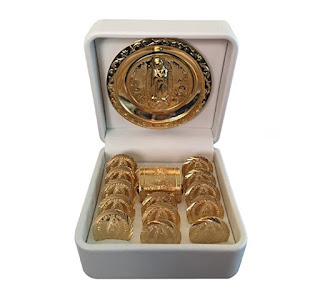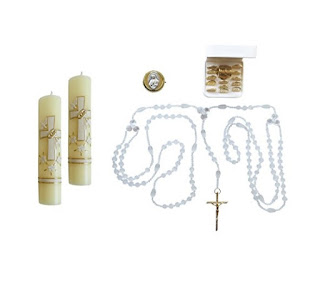While most of us in the West like to think of weddings as
part of a love story, for most of history marriage was really more like a
business deal between two families or countries. But even when wedding weren't
based on love, brides wore dresses that highlighted their family's wealth and social
status. However, for the most part, brides didn't buy a dress specifically for
her wedding day. Instead, a bride usually wore her Sunday best.
Sunday Best dresses were the dress worn on Sunday's because it was the best dress in the wardrobe. Yes, it was the same dress worn every Sunday. Often, these dresses were a dark color that didn't show stains. In fact, many brides wore black because it was popular.
Wedding dress color superstitions
Historically, wedding traditions are often linked to superstition, and the color of the wedding dress back then was no different. Brides avoided wearing green because it was considered an unlucky color, while blue was the most popular choice because it was thought to represent purity and godliness.
 |
| Queen Victoria's white wedding dress inspired today's tradition. |
Queen Victoria wedding dress changed everything
In 1840, the royal wedding between England's Queen Victoria to her first cousin Prince Albert introduced a bridal gown that changed everything. She wore a white gown dripping with orange blossoms. At that time, white fabric was hard to come by and expensive. So brides who wanted to show off their wealth or status created white gowns made with excessive amounts of fabric. However, the whites of that day were not bright like the eggshell white we have these days. About a decade later, Godey's Lady's Book, declared that white was the most fitting hue for a bride.
When the Great Depression hit, the white wedding dress grew
scarce again because people weren't willing to spend money on a gown they would
wear one time. Instead, women returned to the tradition of wearing their best
outfit. At that time it was usually a dark color. By the middle of the 20
century, the white dress grew in popularity again. Some iconic dresses from
this era include Grace Kelly and Princess Diana's wedding gowns.
In other cultures, in countries like China and India, brides
often wear red or a white-red combination because red symbolizes good-luck. In
Japan, brides often wear colorful dresses. Today, in the West, white and light-colors are the most
popular color for wedding dresses, but brides have more choices than ever to
choose from. Many people think white represents purity and virtue while it
really became popular because it represented dressing like royalty.
* * *
Some links in this post are affiliate links. We are a
participant in the Amazon Services LLC Associates Program, an affiliate
advertising program designed to provide a means for us to earn fees by linking
to amazon.com and affiliate sites.









